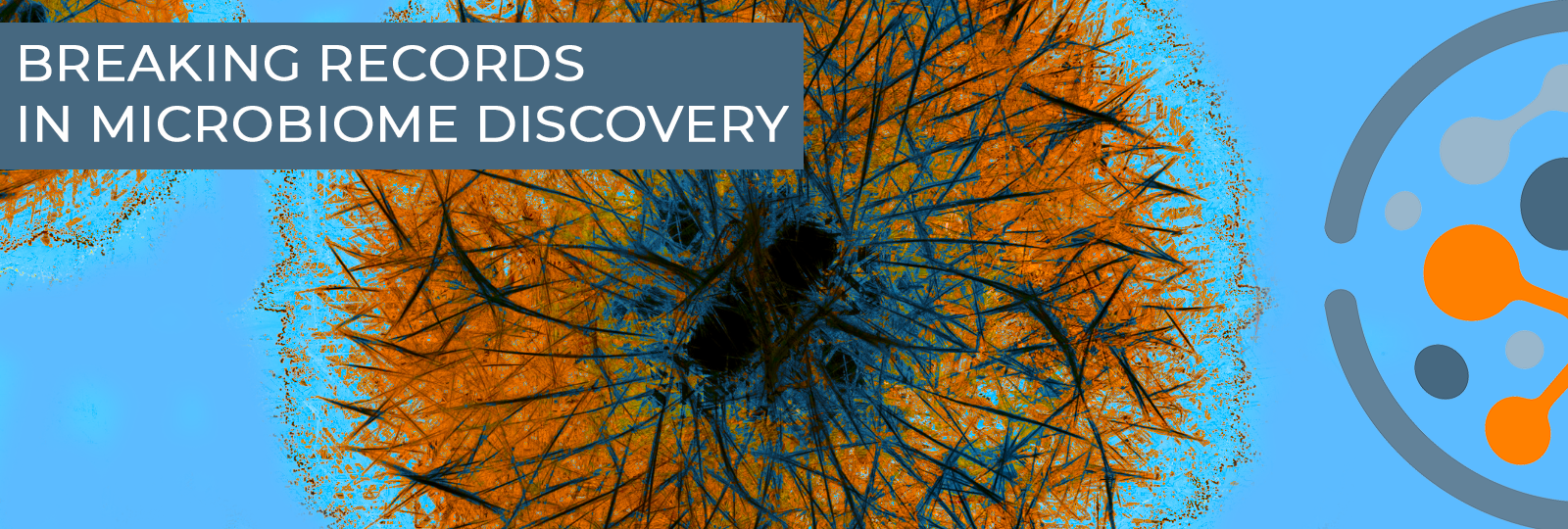
Click here for an updated blog post.
Since its debut, next-generation sequencing has not rested on its laurels. Improved sequencing platforms have reduced error and lengthened reads into the tens of thousands of bases. The debut of long-range sequencing methods that are based on proximity ligation (aka Hi-C) has brought a new order-of-magnitude into reach by linking DNA strands with their neighbors before sequencing.
This progress has birthed high-resolution metagenomics, the sequencing and assembly of genomes from environmental samples to study ecosystem dynamics. But metagenomic experiments often undersample microbial diversity, missing rare residents, overlooking closely related organisms (like bacterial strains), losing rich genetic data (like metabolite gene clusters), and ignoring host-viral or host-plasmid interactions.
A revolution within a revolution
New sequencing platforms and methods can reform metagenomics from within. Long-read platforms, such as the PacBio® Sequel® IIe system, now yield HiFi reads of up to 15,000 base pairs with error rates below 1%. In addition, Phase Genomics created ProxiMeta™ kits to generate proximity-ligated long-range sequencing libraries, which preserve associations between DNA strands originating in the same cell.
In a study posted May 4 to bioRxiv, a team — led by Dr. Timothy Smith and Dr. Derek Bickhart at the U.S. Department of Agriculture and Dr. Pavel Pevzner at the University of California, San Diego — employed both PacBio HiFi sequencing and ProxiMeta in a deep sequencing experiment to uncover record levels of microbial diversity from a fecal sample of a Katahdin lamb. Combined, PacBio HiFi sequencing and ProxiMeta eased assembly, recovered rare microbes, resolved hundreds of strains and haplotypes, and preserved hundreds of plasmid and viral interactions.
HiFi family trees
The team constructed SMRTbell® libraries to generate HiFi data, and ProxiMeta kits to generate long-range libraries. The two datasets, along with the metaFlye and ProxiMeta algorithms, allowed them to assemble contigs and create draft genomes without manual curation.
Researchers compared the breadth and depth of HiFi data-derived metagenome-assembled genomes, or MAGs, to control MAGs from assemblies of the same sample made using long, error-prone reads. HiFi data yielded more complete MAGs — 428 versus 335 — from more bacteria and archaea. HiFi data also generated more low-prevalence MAGs, capturing a larger slice of the community’s diversity by picking up more genomes from less common residents.
The HiFi MAGs also contained more than 1,400 complete and 350 partial sets of gene clusters for synthesizing metabolites such as proteasome inhibitors, which likely help some of these microbes colonize the gut. HiFi data picked up about 40% more of such clusters than control MAGs, illustrating just how much data is lost when long reads aren’t also highly accurate reads.
The team also used the HiFi MAGs to trace lineages within the community. They computationally resolved 220 MAGs into strain haplotypes, based largely on variations within single-copy genes. One MAG had 25 different haplotypes, which are likely strains of the same genus or species.
ProxiMeta’s long-range discoveries
The ProxiMeta-generated libraries added flesh to these MAG frames skeletons by unveiling additional rich biological information. Long-range sequencing linked nearly 300 HiFi-assembled plasmids to specific MAGs — revealing the species that hosted them. One plasmid, for example, was found in bacteria from 13 different genera. Long-range data also identified the first plasmids associated with two archaea, Methanobrevibacter and Methanosphaera.
Long-range sequencing illuminated the viral burden in this community. The HiFi library included nearly 400 viral contigs, more than half of which came from a single family of viruses that infect both bacteria and archaea. The team identified 424 unique viral-host interactions, including 60 between viruses and archaea, which is a more than 7-fold increase over controls.
What’s around the bend?
This study has lessons beyond one lamb’s gastrointestinal tract. It shows decisively that the highly accurate long reads generated by HiFi sequencing ideal partners for Hi-C-derived methods like ProxiMeta — together generating increasingly sophisticated metagenome assemblies for biologists to interrogate.
Applied to other environmental samples, this platform could illuminate the diversity and complexity of other microbial communities — from the bottom of the sea to mountain peaks, and within the stomach of every human being. It could probe pressing issues of our day, such as antibiotic resistance, soil health, or how microbes can break down pollutants. These endeavors will not just fuel the engines of scientific inquiry. Broader use of this method could generate new insights into pressing problems of our times, including antibiotic resistance.
